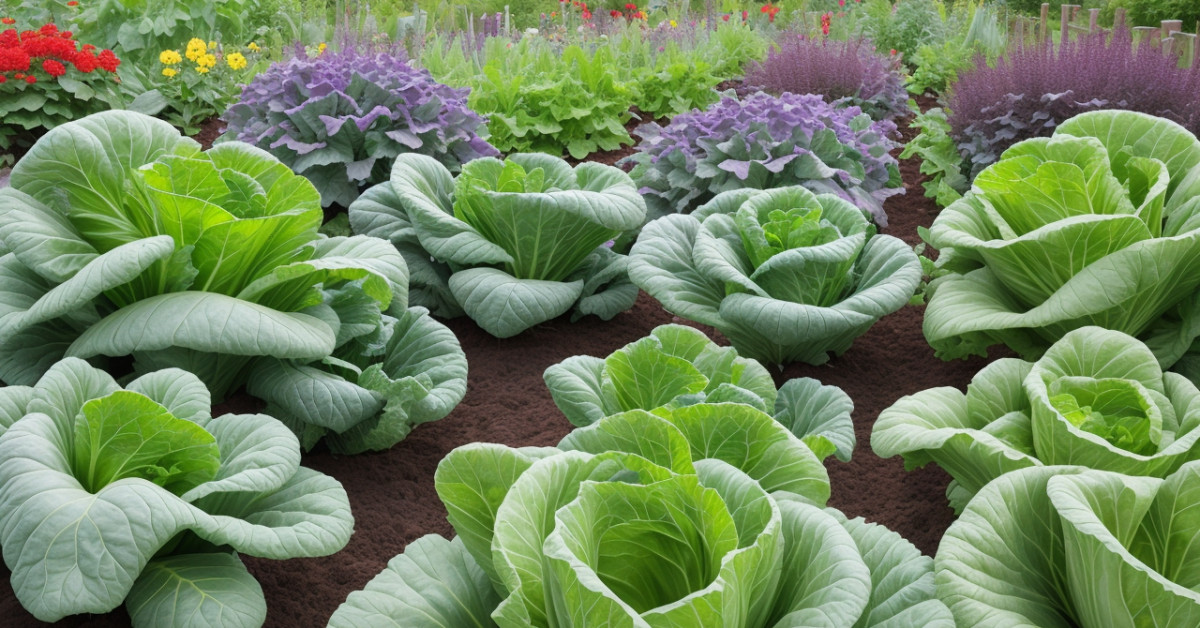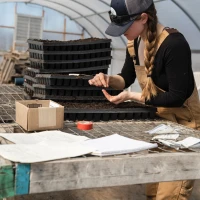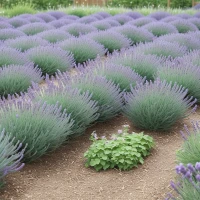Gardeners around the world are turning to companion planting as a powerful strategy to enhance their garden’s sustainability, productivity, and overall health. The art of cabbage companion planting lies in understanding the multifaceted relationships between various plants and using these to one’s advantage. This article will delve into the fascinating world of cabbage companion planting, offering you a detailed guide on the perfect pairings that will help your garden thrive like never before.
Cabbages, with their robust nature and nutritional bounty, are a staple in many gardens. However, their success is greatly influenced by the plants that surround them. Companion planting is not just about filling space; it’s about creating a harmonious garden ecosystem. By selecting the perfect companions for your cabbages, you can deter pests, improve soil health, and boost both flavor and yield.
Join me as we explore the rewarding practice of pairing cabbages with their ideal plant partners, ensuring you have all the knowledge at your fingertips to grow a vibrant, flourishing garden.
The Science Behind Cabbage Companion Planting
Before we dive into the ideal companions for your cabbages, let’s uncover the science that makes companion planting an indispensable tool for gardeners.
Understanding Companion Planting
Companion planting is an age-old agricultural practice that involves the strategic placement of different plants in close proximity. The benefits are manifold:
- Natural pest control through the use of pest-repelling plants
- Enhanced pollination by attracting beneficial insects
- Improved soil nutrition and texture
- Better use of space and light
- Natural support systems between different plant species
Why Cabbages Thrive with Companions
Cabbages, in particular, require a fair amount of nutrients and can chickens eat broccoli be susceptible to various pests such as cabbage worms and aphids. Companion plants can help to shield these leafy greens by either offering a line of defense or by luring pests away.
The Perfect Partners for Your Cabbage Plants
Cabbages benefit immensely from the company of certain plants. These perfect partnerships can chickens eat celery be the key to a lush and thriving garden.
Flavor Enhancers and Nutrient Boosters
Herbs are well-known companions for many vegetables, including cabbage. They not just enhance the flavor but also bring in beneficial insects and act as natural pest deterrents.
- Dill: An herb that helps repel harmful insects and can improve growth and health of cabbages.
- Mint: Known for its strong scent, mint deters cabbage moths and ants effectively.
- Rosemary: Another fragrant herb that keeps cabbage moths at bay, ensuring your cabbages remain untouched.
Pest Controllers
There are plants whose mere presence can deter pests or even attract predators that feast on common cabbage pests.
- Marigolds: The vibrant blooms of marigolds can repel cabbage worms and other pests due to their unique scent.
- Nasturtiums: This plant acts as a trap crop for aphids, drawing them away from your cabbages.
- Onions: The strong aroma of onions can mask the scent of cabbages, confusing and repelling insects.
Soil Enhancers
Some plants can help in improving the soil quality, by fixing nitrogen or adding essential nutrients, which cabbages will greatly appreciate.
- Legumes: Beans and peas fix nitrogen in the soil, which is a crucial nutrient for leafy vegetables like cabbage.
- Chamomile: Known to improve the flavor of cabbages, chamomile also enriches the soil with calcium, sulfur, and potassium.
Avoiding Incompatible Companions
Just as there are plants that can chickens eat mango enhance the growth of cabbages, there are also those that can have detrimental effects. It’s crucial to know which plants to keep away from your cabbage patch.
Plants to Steer Clear Of
Avoid planting cabbages near these plants to prevent competition for nutrients or attraction of pests:
- Strawberries: Strawberries are particularly susceptible to pests that also attack cabbages, so pairing these can spell disaster.
- Tomatoes: Sharing common pests and diseases, tomatoes can negatively affect the health of cabbages.
- Grapes: The acidic secretions from the roots of grapes can hinder cabbage growth, making them incompatible garden mates.
Cultivating a Companion Planting Strategy
Implementing a companion planting strategy requires careful planning and some trial and error. Here are some steps to guide you:
Assessing Your Garden Space
Start by assessing the space you have available. Cabbages need room to grow, and so do their companions. Proper spacing is key to avoid overcrowding and to allow for adequate air circulation.
Rotation and Diversity
Rotate your crops each year to prevent the build-up of pests and diseases. Diversify your plantings to create a more resilient garden ecosystem.
Timing is Everything
Understand the growth cycles of your plants. Planting companions at the same time as your cabbages, or even before, can ensure they establish themselves and start providing benefits early on.
Advanced Companion Planting Tips for Seasoned Gardeners
Even experienced gardeners can refine their companion planting techniques. Consider these advanced tips to elevate your cabbage companion planting game:
Polyculture Over Monoculture
Move away from single-specie plantings. Polycultures (planting multiple species together) offer a myriad of benefits in terms of pest control, disease resistance, and overall garden health.
Experiment with Permaculture Principles
Integrate permaculture principles that focus on creating sustainable and self-sufficient gardens. These principles often align seamlessly with companion planting strategies, offering a more holistic approach to gardening.
Companion Planting and Crop Succession
Master the art of crop succession by planning ahead for what will follow once your cabbages are harvested. This can help maintain soil health and keep pest populations in check.
Harvesting the Rewards of Cabbage Companion Planting
After implementing these companion planting strategies, you will begin to see noticeable improvements in your garden. Cabbages will be healthier, pest problems will be significantly reduced, and yields can greatly increase.
Observing Changes and Documenting Results
Keen observation and documentation can help you fine-tune your strategy for even better results in subsequent seasons. Note which pairings worked best and which could be improved upon.
The Flavor Factor
Don’t be surprised if you find the flavors of your cabbages enhanced. Companion planting can influence the taste of your vegetables by improving soil conditions and reducing stress on your plants.
A Bountiful Harvest
With diligent care and strategic companion planting, you can expect a bountiful harvest of cabbages. Share your surplus with friends and family, or preserve them for the winter months.
Conclusion: The Synergy of Cabbage Companion Planting
Cultivating a garden is an act of creation, a dance with nature that can yield incredible results when you tap into the synergy of companion planting. By following the guidelines outlined in this article, you’re well on your way to growing a thriving cabbage garden that is not only productive but also sustainable.
Remember to remain patient and attentive to your garden’s needs, and adjust as you go. With cabbage companion planting, your garden won’t just survive — it will flourish. Embrace these perfect pairings and watch as your garden transforms into a lush, verdant paradise that is the envy of all who behold it.










